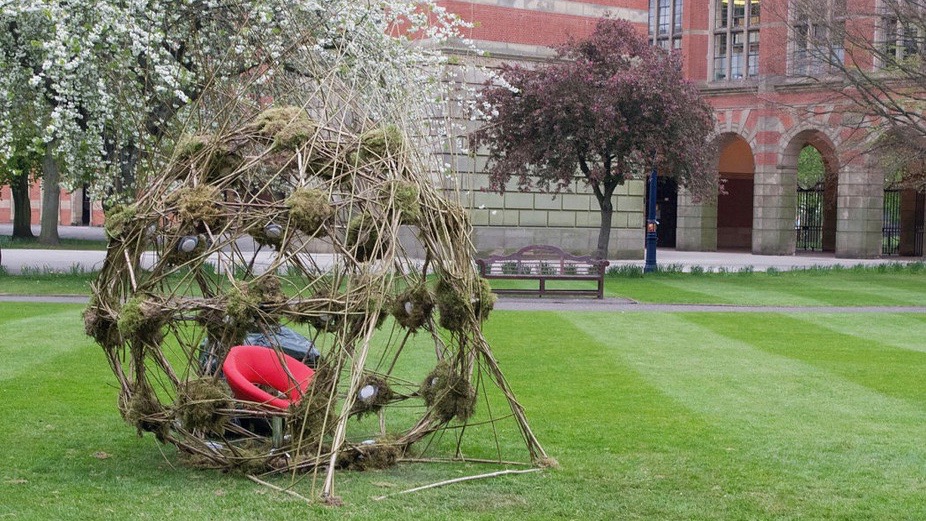Summer School Online Session 3
Photo: Beyond is multichannel installation produced by Peter Batchelor in collaboration with visual artist Ian Bilson. Image source: https://peterb.dmu.ac.uk/beyond_willow.html
On April 26, 2024, we had our third summer school session. We had the honour of listening to Peter Batchelor talk about key ideas on sound installations, with a focus on public art from an acousmatic music perspective:
- Public Sound Installation Art by Peter Batchelor (De Montfort University)
The format consisted of a 40-minute presentation followed by a 10-minute Q&A. You can find below the video recording of the presentation. Thanks to Pete for sharing his know-how and in-depth experience on sound installation art.
Public Sound Installation Art by Peter Batchelor (De Montfort University)
In this thought-provoking presentation, Peter Batchelor introduces key concepts related to public sound installation. Through the use of a theoretical framework borrowed from Line Marie Bruun Jespersen with the three pillars of Time, Space and the Social, which relates to promoting new aesthetic experiences in public space, Peter Batchelor presents a selection of relevant projects. This includes works by Bernie Krause, Francisco López, Jana Winderen, Marcus Maeder & Roman Zweifel, Jim Finer, Nikola Bašić, Alan Lamb, Garth Paine, Graeme Miller, Akio Suzuki, David Prior & Frances Crowe, Max Neuhaus, David Prior, John Pugh, Jon Aveyard, Janet Cardiff & George Bures Miller, and Peter Batchelor as well! Using this framework when designing a public sound installation, as well as ideas from the projects presented, can inform the Sensing the Forest Summer School and the related artistic intervention on the site.
The Q&A was hosted by Luigi Marino. The questions that emerged related to particular pieces and how they are technically made, such as Alan Lamb’s Wogarno Wire Installation (2001) that transduces sound to the rock based on the wind energy (aeorophonic); Peter Batchelor and Ian Bilson’s Beyond (2014-2024) that is designed for outdoors using multichannel speakers driven by electricity; and Marcus Maeder & Roman Zweifel’s treelab that sonifies a range of measurement data from the Swiss Alps rendering ecophysiological processes audible.
We also briefly discussed on any updates or questions regarding developing plans for the installations of the summer school participants. An important question posed was what scale we are envisioning for the installations, how extensive, and how sophisticated these ideas will need to be. Pete recognised that the budget of £50 limits what is possible, and that the interventions are for an afternoon, which can also limit to an extent. As part of the feedback when pitching the ideas of the project, we will discuss the feasibility of the scale. Luigi also announced that another important point related to the extension of the installation is considering the aesthetic value of developing these relationships between the soundscape and the mediums used in the artworks.
It was fantastic to see such a variety of works on public sound installation art! Thank you Pete for the careful selection! This was food for thought on the importance of the decisions taken when designing a sound installation for the public space, including designing for the long term, authorship of the listening experience, the selection criteria of the sound sources used, and the unavoidable open interpretation of the sonic material and artistic experience delivered.
